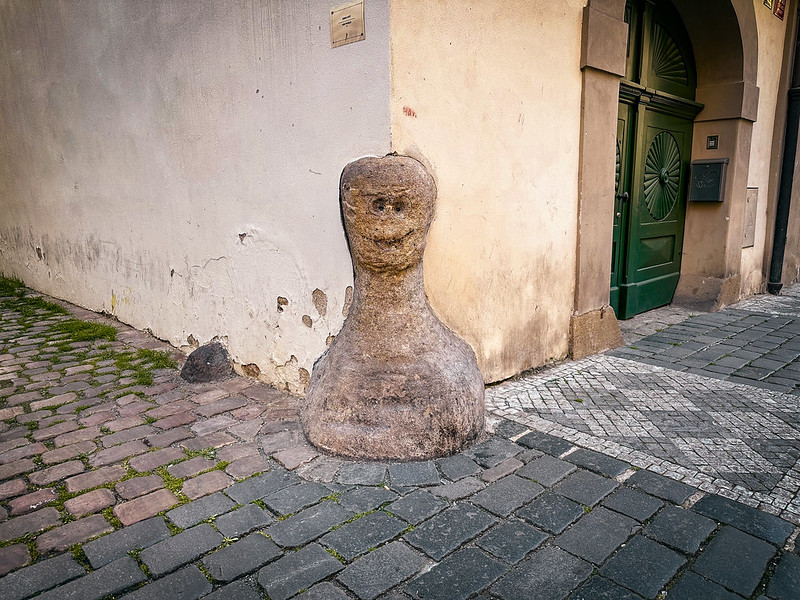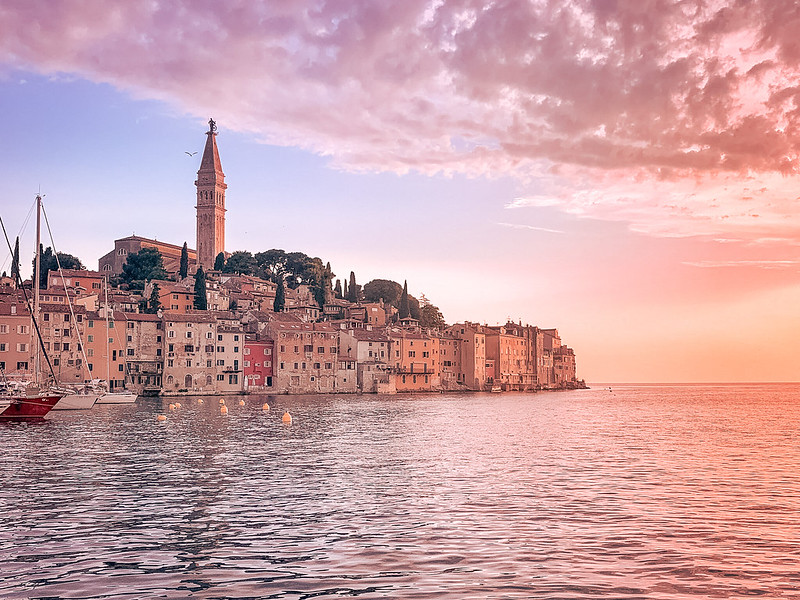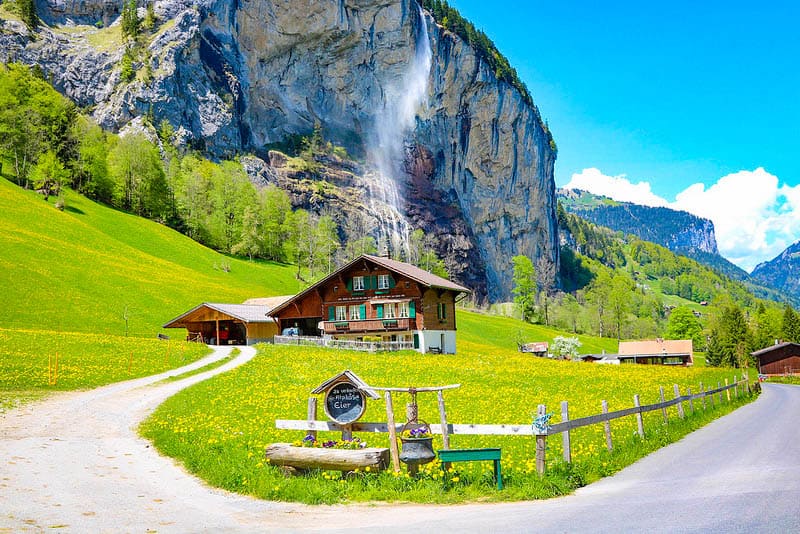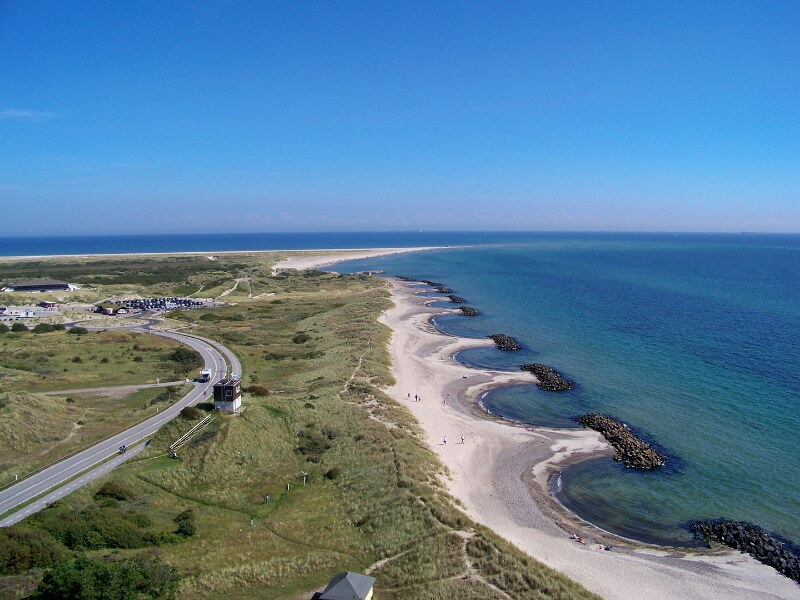How to spend amazing 3 days in Prague (+ map)
Spending 3 days in Prague and wondering what to do? I’ve handpicked the very best things to do in Prague, based on my visits to this wonderful town.

I love Eastern Europe, and I’m so excited to share my recent trip to the Czech Republic with you. A few weeks ago, I revisited Prague for the first time in 20 years.
It has changed a lot, and one of the things that hit me the most was how many new attractions that have popped up. Correction… Maybe not so much popped up – they’ve just been hidden gems (and some of them still are to an extent).
I’ve included the best things to do in Prague in this post, including many sites you won’t find on other Prague itineraries.
Let’s dig in.
Read next: How to spend amazing 3 days in Czechia (off the path)
This post contains referral links for products I love. Adventurous Miriam earns a small commission at no extra cost to you if you purchase through my links. I appreciate your support ♡ Learn more
3 days in Prague
Intro to Prague
Prague is the most popular capital in Eastern Europe. Its history goes back more than a thousand years, and its beer is known all over the world.
It’s also home to the largest ancient castle in the world, the Prague Castle, which covers an area of over 70,000 square meters and dates back to the 9th century.
The Old Town is a great place to explore, and you can’t miss the Jewish Josefov quarter, which was once the largest Jewish ghetto in Europe.
🔥 Top tip: Start your day early! From 6-9.30 in the morning, you’ll have the city mostly to yourself. Most sites and churches don’t open until 9 or 10, but you can still explore Charles Bridge, The Old Town and more.

🚞 Get the all-in-one Prague Card!
With the Prague Card you’ll get access to over 70 of Prague’s best attractions,
Plus, you’ll have transportation and a river tour included.
Simply show the Prague CoolPass on your smartphone and you’re ready to explore the city.
Where to stay in Prague
On my visit to Prague, I stayed at different two hotels in the New and the Old Town. My favourite was The Mozart Prague, which is one of Prague’s best luxury hotels, located right next to Charles Bridge.
If you’re looking for a more affordable hotel, I recommend MOSAIC HOUSE Design Hotel, where I stayed on my first day.
The Mozart Prague (⭐ 9.0) is an amazing, classical hotel where you’ll feel pampered during your stay in the city. The breakfast is the best I had during my whole trip! Check rates and availability here.
MOSAIC HOUSE Design Hotel (⭐ 9.4) is a young hipster hotel with an artsy vibe. The rooms are homely, and there’s a stunning interior! Check rates and availability here.


What to eat in Prague
Prague is a mekka when it comes to food! You can find anything from amazing street food to traditional Czech food and fine dining serving dry ice desserts.
I really enjoyed the food at Mlýnec Restaurant, which was a tasty and fun experience. Read reviews on Tripadvisor here.
Make sure to try the Czech beer – often touted as the world’s best beer.
Read next: Czech food: 24 delicious dishes in Czechia you should try

Join a walking tour
On my last day in Prague, I joined a walking tour with a guide that showed some of the lesser-known places in Prague.
It was a private and customized tour, but these walking tours here also offer a thorough introduction to Prague with the most important landmarks:
🧭 Best walking tours in Prague
- Walking tour of the Jewish Quarter. Book here.
- Walking tour of the Old town, New town and Jewish quarter. Book here.
- Walking tour of the top sights and Prague Castle. Book here.
Map of 3 days in Prague itinerary
On this map below, you can find all the sites I’ve mentioned in this post. Each day is marked with a different colour: Sights on Day 1 are purple, Day 2 are blue and Day 3 are yellow.
Use the + and – sign in the corner to zoom in and out.
3-day prague itinerary
Day 1 – The Lesser Quarter
Your first day in Prague is spent in the Lesser Quarter, in the Mala Strana and castle district. This is on the other side of the Charles Bridge (opposite the New Town and Old Town).
Charles Bridge
Charles Bridge is one of the most iconic sites in Prague. Built in 1357, it connects the Old & New Town with the Lesser Quarter.
I highly recommend that you start early in the morning. I went a few times, and the best time to visit is around sunrise. If you visit after 8 am, sun will be up which makes photography tricky.
If you visit later than 10, crowds will start to arrive, and trust me, it gets crowded!
🔥 Tip: You can climb the powder tower on the Old Town side to get a great view of the bridge and the Prague Castle in the background. Get your tickets here.



Devil’s stream
The Devil’s Channel in Prague is a man-made channel from the Middle Ages.
It’s 740 meters long and its purpose was to provide water flow for mills built along its course. Three of those mills still stand today.
It’s known as the “Venice of Prague” because of the houses along the channel, but its official name is Devil’s Stream.
Legend says that it’s named after a devilish woman who used to live nearby at Maltese Square. However, it’s more likely that it was named after the house “At the Seven Devils” that stood there.
Fun fact: The channel has featured in famous movies like Mission Impossible and Amadeus.

John Lennon Wall
In the Lesser Quarter close by the river, you’ll find The John Lennon wall. It’s not your ordinary wall. It’s covered in graffiti and lyrics from Beatles songs.
The wall became famous in 1980 after John Lennon’s assassination, and it also became a platform for young Czechs to express their grievances with the government.
During Communist times, the wall was frequently painted over, but it was quickly re-covered with poems, song lyrics, and flowers. Today, you can’t paint on it anymore.

Mala Strana
The Malá Strana neighborhood is the perfect place to take a stroll. You’ll be amazed by the historic cobblestone streets and the stunning facades of centuries-old buildings.


Vrtba garden
The Vrtba Garden is a terraced Baroque garden on Petřín hill, just a few steps away from Lesser Town Square and Charles Bridge.
The garden is surrounded by high walls and buildings, creating a peaceful escape from the busy nearby attractions. This also makes it difficult to find, so it’s somewhat of a hidden gem.
When you visit, you might have it all to yourself.

Strahov Library
After visiting Charles Bridge, head up the hill to Strahov monastery and library. Speaking from experience, the hill is a killer, so you might want to take the tram or a taxi to the top.
Strahov is one of the most beautiful places in Prague so don’t miss it. It’s 100% worth seeing!
It’s located behind Prague Castle and Petrin Hill, and this spacious compound includes a monastery, library, a church, a brewery AND some of the best views of the historic Lesser Town area.


Prague Castle
Next, head down the hill to Prague castle, which is a village-like complex of churches, towers, halls, and palaces that holds over 1000 years of history.
This UNESCO World Heritage site is the cultural and historical centre of Czechia and has been the site of many important events, including the coronations of Bohemian kings and the 1989 election of Václav Havel as president.
While entry to the Prague castle complex is free, many buildings within the castle, such as St. Vitus Cathedral, Basilica of St. George, and Golden Lane, require a combined entry ticket.
For a guided tour, check out the 2.5-Hour Tour, which includes admission. Book tickets here.

St. Vitus Cathedral
St. Vitus Cathedral is located within the walls of Prague Castle and is one of the most picturesque Gothic churches in the world. It’s an absolute must-visit while in Prague.
Inside, the stained glass windows fill the space with a rainbow of colours, and the pillars seem to stretch endlessly upwards.
If you’re up for a climb of 287 stairs, head up to the Bell Tower for breathtaking panoramic views of Prague. Get your tickets to St. Vitus and Prague Castle here.

Franz Kafka museum
Franz Kafka is a big name in Prague, and if you’re curious about how his life here influenced his literary work, this museum is a must-visit.
You’ll discover details about where he lived, his love life and his relationship with his father.
In front of the museum is one of the most famous statues by Czech sculptur, David Černý. Make sure to check it out.

St. Francis of Assisi Church
On the opposite side of the Charles Bridge is the Old Town. Right when you cross it, you’ll find the Church of St. Francis of Assisi on your left.
The Church of St. Francis of Assisi was built in Baroque style between 1679-1685 and stands on the site of the original church of St. Francis of Assisi from 1270.
It’s really beautiful so do yourself a favour and look inside.

Go out (bar or pub crawl)
Looking for a fun night out on your first day in town? I highly recommend The Hemingway Bar.
We went there and waited in line for like 5 minutes or so, but it was super cosy inside. If you’re looking for even more fun and new friends, you should check out the Prague pub crawl.
It’s a steal – you get two hours of unlimited beer, wine, vodka, and absinthe, plus a free shot at each of the four bars you’ll visit. You won’t leave sober.

Prague 3-day itinerary
Day 2 – The Old Town
Your second day is all about Prague’s old town. Again, begin your day early by walking to the Old Town Square to see the city come to life before it gets too crowded.
Old Town square
The Old Town Square is open and spacious, surrounded by colourful and impressive buildings like Tyn Church and the Old Town Bell Tower, which has spectacular views of the square from the top.
Walk through the narrow streets and alleys that branch off from the square and get lost in the charming surroundings. It’s the best way to spend the morning in Prague.

The Astronomical clock
Prague’s Astronomical Clock is right next to the Old Town Square. It’s the oldest working clock in the world, built in the 14th century.
Every hour, the 12 mechanical apostles come out of small doors above the clock face, while the clock face features four figures representing Vanity, Greed, Death, and Lust – symbols of evil from the time when the clock was made.
Crowds gather every hour to watch the spectacle, which means it’s the perfect place for pickpockets. Be aware!
You can take a tour of the Astronomical Clock, where you’ll learn about the history of the clock tower. Avoid waiting in line with these pre-booked tickets.




Bethlehem Chapel (“Za Pravdu” steel plates)
On the outer wall of Bethlehem Chapel is a special exhibit, made to commemorate the 600th anniversary of Jan Hus and his death.
The exhibit features eight stainless steel plates with letters cut into them at odd angles.
On only two days of the year, you can stand across the road and watch the light pass through the plates. They’ll project the letters onto the wall to form the message “Za Pravdu”, which means “For the Truth”.
This sentence is often associated with Jan Hus and his attempts to reform the 15th Century Roman Catholic Church. He was burned at the stake for his criticism of the Catholic Church.

Golem statue
Close by is a statue of Golem.
The Golem of Prague is a well-known legend about a golem, a man created out of clay who was brought to life by a rabbi to protect the ghettos of Prague from pogroms and other anti-Semitism.
It’s a story of Bohemian Jews who united to preserve their culture.
Rabbi Loew, an important rabbi in Prague, is believed to have created this tale in the 16th century. You can find his grave at the Old Jewish Cemetery.

Infinity Book tower
Now, onto the library.
Yawn, another library?
I know, I know. It sounds boring, and I’ve already dragged you to one. But trust me, the Municipal Library in Prague has a special feature you’ll want to check out.
As you enter, you’ll see a wall-to-ceiling cylinder tunnel made of books, with people sticking their heads down to admire the sculpture’s manipulation of light and mirrors.
From the inside, it looks like an infinity tunnel of books that goes on and on. Hence the name: The Infinity Book Tower.

The Old Jewish cemetery
Prague used to have a large Jewish population, but they were confined to a small part of town with a small cemetery.
Over time, more people were buried there, and they had to stack the headstones and bury more people on top.
Now, there are thousands of tombstones in a small space in the Jewish Quarter, which you should definitely check out along with the adjoining museum.
For the best tour of the Jewish Quarter, book a private walking tour to see the Old Jewish Cemetery, the Jewish museum and main synagogues in the area.

Franz Kafka Statue
Between the Old Jewish Cemetery and The Spanish Synagogue, you’ll find a bronze statue of Franz Kafka.
Created by sculptor Jaroslav Róna, the statue stands at 3.75 meters in height and weighs 700 kg.
It’s a two-figure sculpture consisting of two bodies, with the lower figure being a hollow suit and the upper figure being Franz Kafka himself sitting on its shoulders.
The memorial is inspired by Kafka’s short story, Description of a Struggle and was built for his 120th birthday.

Spanish Synagogue
The Spanish Synagogue is the most beautiful synagogue in Prague (and the world, if you ask me). The building is detailed with intricate tile work and gold leaf, making it absolutely stunning. Be sure to add it to your list of things to do in Prague.
The synagogue is built in the Moorish style of southern Spain (like the Alhambra), giving it a unique look with its crenulations.
Inside, there’s an exhibition on the Jewish history of the Czech Republic, taking you on a fascinating journey through the ages.
This is the best tour of the Spanish synagogue and the Jewish Quarter: Book your tickets here.

Speculum Alchemy
Crazy fact: Prague has over 280 museums, and some of them are really unique (like the Sex Machines Museum or the Museum of Communism).
If you’re into alchemy, there is also museums dedicated to this topic! The Speculum Alchemy is a real underground laboratory that was only recently discovered.
It used to be an alchemist’s lair where he did all kinds of experiments, hidden from the inquisition.
And just to be safe, he had a tunnel (you’ll get to see the beginning of it on the guided tour) that led straight from the lab to a secret escape in the woods outside the city.


Klementinum Library
The Klementinum Library in Prague is the world’s most beautiful and atmospheric library. It was built in Baroque Style as part of a Jesuit College and houses a collection of 20,000 rare books.
In addition to the bookshelves, the library is decorated with frescoes, astronomical globes, and portraits.
Trust me, you’ll want to get a guided tour of the Klementinum Library and Astronimical tower, it’s not possible to visit without a tour.
Pre-book your tickets here – you need to book in advance as its a popular tour.

St. Clement Cathedral (Klementium)
It doesn’t look like much from the outside, but the St. Clement Cathedral, which is located inside the Klementinum compound is so stunning.
Built in Gothic-style with Baroque elements, it dates back to the 14th century.
If you arrive a little early before your guided tour of Klementinum, you can stop by the cathedral, or visit afterwards. That’s what I did.

3 days in Prague itinerary
Day 3 – The New Town
On your third day in Prague, you’ll be exploring the New Town and some of the lesser-known neighbourhoods.
So in short: We’re going off the path.
The Dancing house
You’re not seeing things – the Dancing House really does look like it’s dancing! This unique example of modern architecture features a glass tower symbolising women and a rock tower symbolising men.
Today, it’s home to offices and galleries, and the terrace offers a breathtaking view of the city.
The Dancing House in Prague has unique architecture unlike anything you’ve seen before so it’s definitely worth checking out if you’re in the area. But I wouldn’t go out of my way to see it.

Man Hanging Out (Sigmund Freud)
Take a walk through the beautiful Stare Mesto urban area of Prague and look up.
You’ll be surprised to see a seven-foot-tall sculpture of Sigmund Freud, the world-famous psychoanalyst, hanging from a metal beam above the cobbled streets.
This unique artwork has become so popular that it has been exhibited in cities all over the world, including Chicago, London, and Berlin.

Franz Kafka head
5 minutes walk from the Sigmund Freud sculpture, you’ll find another unique sculpture – of writer Franz Kafka’s head by Czech artist David Cerny.
Created in 2014, the sculpture is made of 42 independently driven layers of stainless steel, weighing 45 tons.
The twisting and reflective design brilliantly captures Kafka’s tortured personality and self-doubt, which were constant struggles throughout his life.
🪦 Interesting side fact: There’s a Jewish cemetery buried under the square where the sculpture stands.

Our lady of Snow church and The Fransiscan garden
Another 5 minutes walk from here is a hidden gem: The Church of Our Lady of the Snows.
This church has the highest vault in Prague – 34 m – and it was never even completed to its planned size! The church also has the highest column altar in Prague.
It was founded in 1347 to celebrate King Charles IV’s coronation but was never completed due to war and a depleted treasury.
Still, the Baroque interior is stunning with beautiful statues, paintings, and stained glass, so make sure to check it out.

Palac Lucerna
The Palac Lucerna is an elegant art-nouveau shopping mall from 1920. Inside the mall, you’ll find the statue of St. Wenceslas by sculptor David Černý.
It’s controversial as it depicts the Czech patron sitting on the belly of a dead horse with its head hanging down and tongue out like a caught animal.
The statue was created in 1999 using foam polystyrene and epoxy resin and stands almost 5 meters high and less than 3 meters long.
It symbolises the state of the Czech Republic according to Černý’s opinion – nothing works, but everyone pretends it does. The statue will remain in Lucerna until the constitutional monarchy is restored in the Czech Republic.

The Main Post office (Česká pošta)
Prague’s main post office is located in a beautiful Neo-Renaissance building. The beautiful murals are worth stopping by to see, just remember that it’s a place of business.

Jerusalem synagogue (Jubilee)
The Jerusalem Synagogue in Prague, also known as the Jubilee Synagogue, is the largest and youngest synagogue in the city.
Designed by legendary architect Wilhelm Stiassny in 1906, it’s a stunning example of Art Nouveau stylisation of the Moorish style.

David Černý sculptures in Zizkov or Karlin
Czech sculpture artist David Cerny is known for his internationally famous giant space-age crawling babies on the Zizkov TV tower in Prague. You can also see his Lilith statue and giant hand in Karlin.
If you’re visiting Prague and looking for things to do, you can spend a day spotting his works around town.


Invalidovna
The once-industrial-now-hipster neighbourhood of Karlín is not a typical tourist area. If you’re looking for an authentic and different experience of Prague, this is where to go.
In Karlin lies The Invalidovna; a Baroque complex, built between 1731 and 1737 by Kilian Ignaz Dientzenhofer.
It was originally built to house and care for war-wounded soldiers until the 1930s. Later, it was used as a museum and military archive.
It’s a great place to visit for anyone interested in history and architecture.


Lunch at Eska (Michelin ⭐)
Also in Karlin is Eska – a restaurant in Prague that serves amazing food without costing an arm and a leg.
It’s been awarded the Michelin Bib Gourmand, which means you can get high-quality cuisine without breaking the bank. So if you’re looking for a tasty meal that won’t empty your wallet, Eska is definitely worth checking out!
The potatoes in ash are popular, but I preferred the chicken with fried gnocchi – so good.


Olšany cemetery
Last site on your 3 days in Prague itinerary is Olšany Cemetery. It’s the largest cemetery in Prague and one of the biggest in Czechia, consisting of 12 different sections.
If you’re a regular reader, you know that I love visiting cemeteries when I travel. They can tell you a lot about a country and its people. Like this colourful cemetery in Guatemala or the Hallstatt Charnel House, which is both scary and beautiful.
Olsany Cemetery includes the New Jewish Cemetery, which replaced the Old Jewish Cemetery and has a small Orthodox section, as well as a tiny Muslim section on the opposite side.
Over 2 million people are buried here in more than 60,000 grave sites. The cemetery features a “Learning Trail” that takes you on a historical walk through the graves.

More posts from Czechia you might like
- How to spend amazing 3 days in East Bohemia Czechia
- The perfect one day in Litomysl itinerary
- Litomysl castle: How to visit the UNESCO Czech chateau
- One day in Pardubice, Czech Republic – city of gingerbread
- The ultimate Dolni Morava itinerary, Czech Republic
- 25 epic reasons to visit Czech Republic now
- 13 fun things to do in Prague in the rain
Save it!







